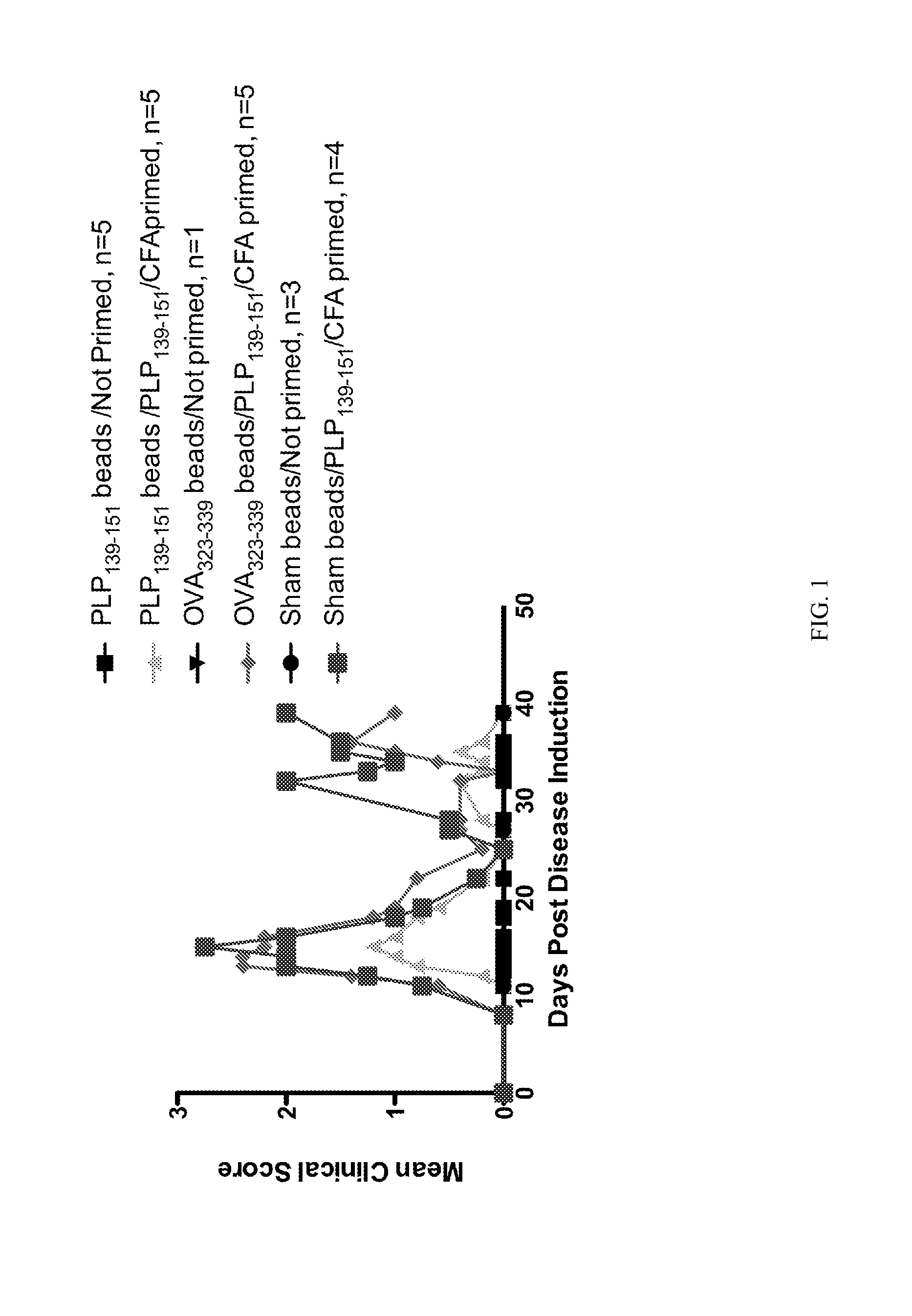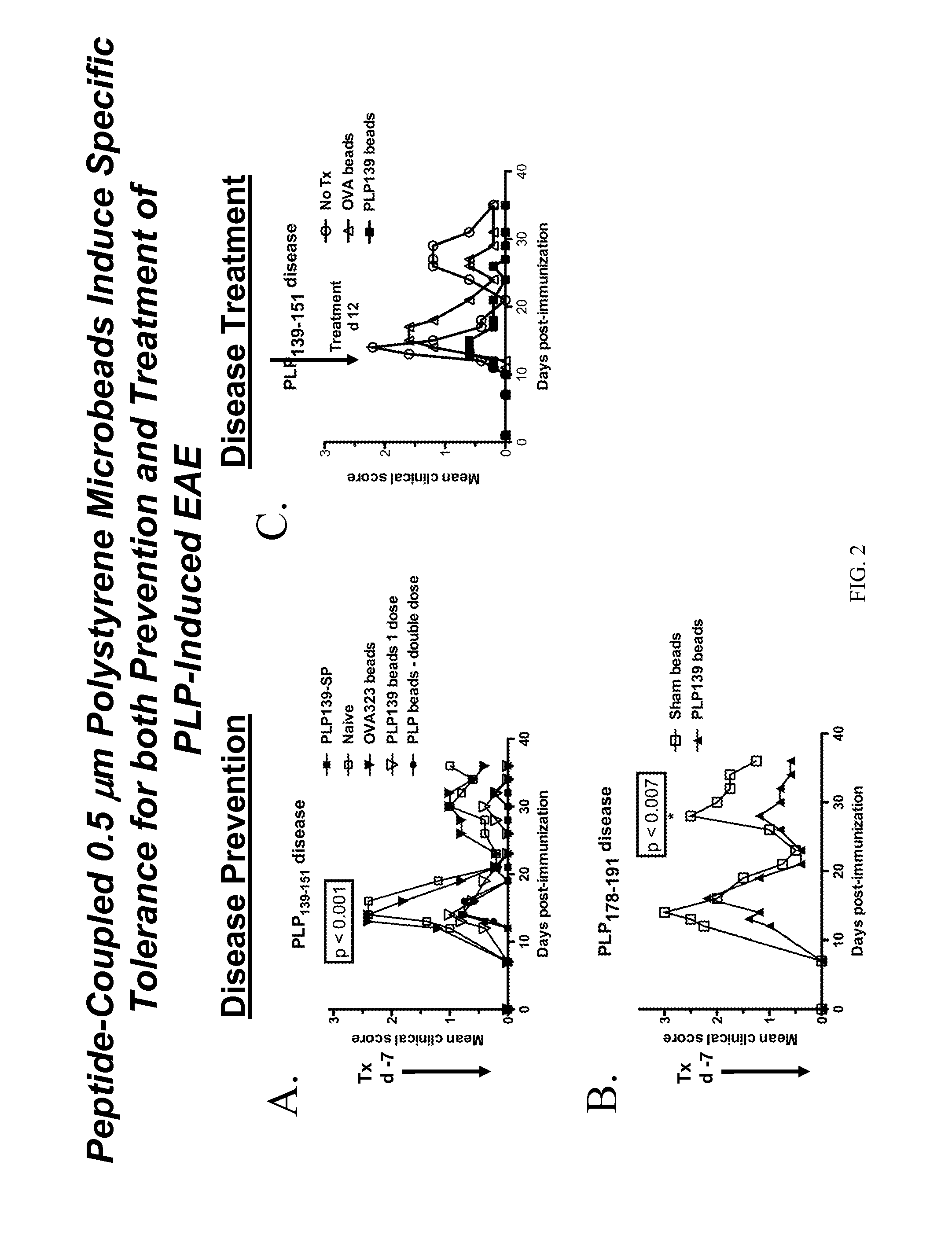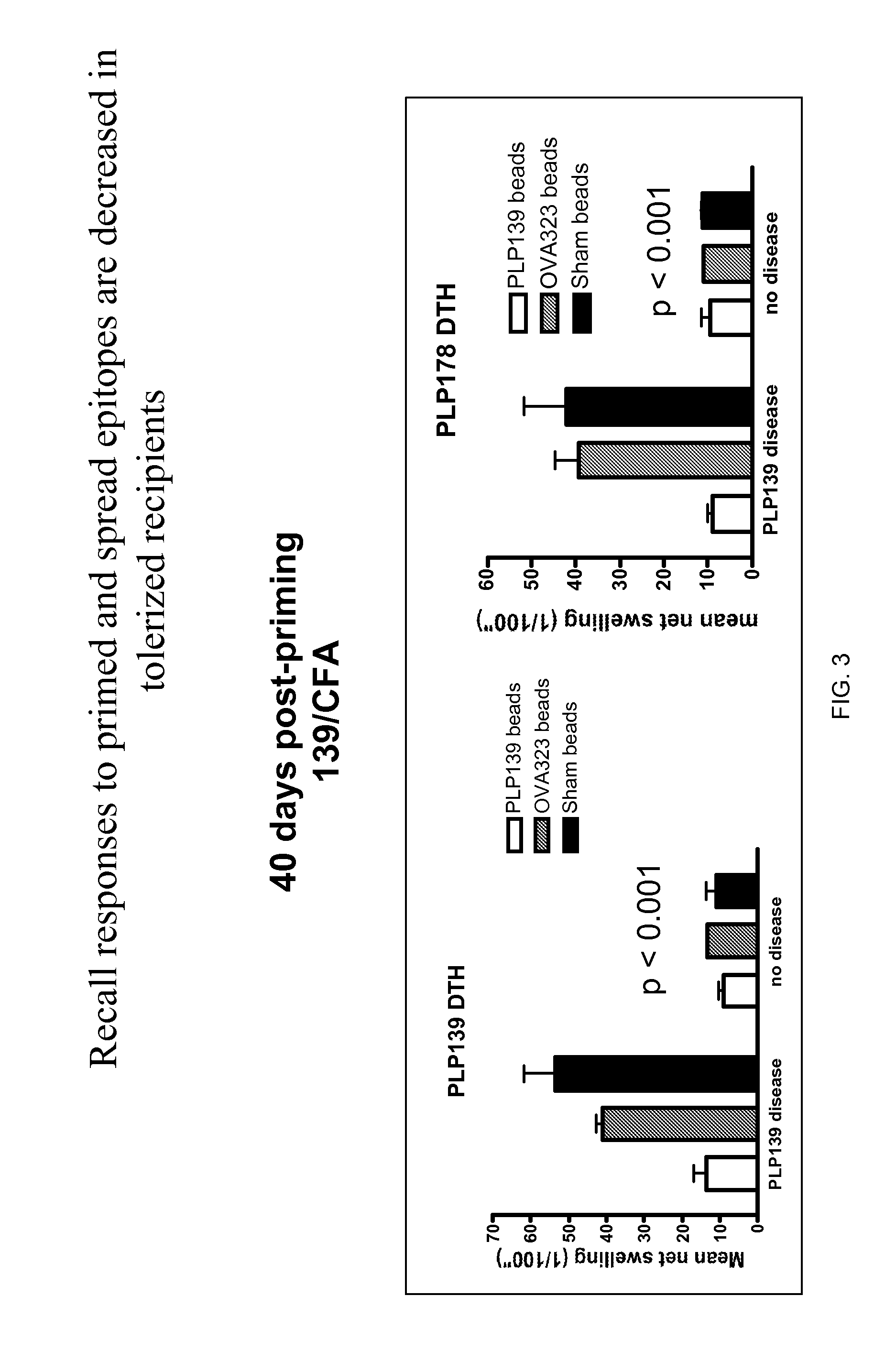Compositions and methods for induction of antigen-specific tolerance
a technology of antigen-specific tolerance and compositions, applied in the field of compositions and methods for inducing antigen-specific tolerance, can solve the problems of high cost of process, high risk of severe side effects, and long-term use of high doses of immunosuppressive drugs, and achieve the effect of efficient inducing long-term immune toleran
- Summary
- Abstract
- Description
- Claims
- Application Information
AI Technical Summary
Benefits of technology
Problems solved by technology
Method used
Image
Examples
example 1
Induction of Tolerance to EAE Relapse Using PLP Peptides Conjugated to Polystyrene Spheres
[0144]Polystyrene microspheres were coupled either with encephalitogenic epitopes or control peptides to determine whether active EAE can be induced using artificial carriers.
[0145]Methods for determination of inhibition of induced EAE followed procedures as previously described (Smith and Miller (2006) J. Autoimmun. 27:218-31; Turley and Miller (2007) J. Immunol. 178:2212-20). Briefly, SJL mice, 6-7 weeks old, were purchased from Harlan Laboratories, Bethesda, Md. All mice were housed under specific pathogen-free conditions (SPF) in the Northwestern University Center for Comparative Medicine. Paralyzed animals were afforded easier access to food and water.
[0146]Fluoresbrite YG Carboxylate microspheres were purchased from Polysciences, Inc. (Warrington, Pa.). Synthetic peptides PLP139-151 (HSLGKWLGHPDKF) and OVA323-339 (ISQAVHAAHAEINEAGR) were purchased from Genemed, San Francisco, Calif. The p...
example 2
Formulation of PLG Microspheres
[0150]This example describes the formulation of poly(lactide-co-glycolide-) (PLG) microspheres suitable for encapsulating and delivering antigen-specific peptides. The microspheres are prepared using a double emulsion technique (J. H. Eldridge et al. Mol Immunol, 28:287-294, 1991; S. Cohen et al. Pharm Res, 8:713-720, 1991). RG502H is used as the polymer, and polyvinyl alcohol is used as a stabilizer. Encapsulation efficiency is found to increase with increasing PLG concentration in the organic phase (dichloromethane) (30-200 mg / ml), which also correlats with an increase in median microsphere diameter (about 1 to about 10 μm).
example 3
Preparation of Liposomal Composition Containing Myelin Basic Protein
[0151]An optimal myelin basic protein (MBP) / liposome ratio is determined empirically by methods previously described (17). To prepare the MBP / lipid combination, the components are first brought to room temperature. The lipid [1,2-dilauroyl-sn-glycero-3-phosph-ocholine (DLPC); Avanti Polar-Lipids, Inc., Alabaster, Ala.] at a concentration of 120 mg / ml is dissolved in tertiary-butanol (Fisher Scientific, Houston, Tex.) then sonicated to obtain a clear solution. MBP at 40 mg / ml is also dissolved in tertiary-butanol and vortexed until all solids are dissolved. The two solutions are then combined in equal amounts (v:v) to achieve the desired ratio of MBP / liposome, mixing by vortexing, frozen at −80° C. for 1-2 h, and lyophilizing overnight to a dry powder prior to storing at −20° C. until needed. Each treatment vial contains 75 mg MBP.
PUM
| Property | Measurement | Unit |
|---|---|---|
| diameter | aaaaa | aaaaa |
| diameter | aaaaa | aaaaa |
| diameter | aaaaa | aaaaa |
Abstract
Description
Claims
Application Information
 Login to View More
Login to View More - R&D
- Intellectual Property
- Life Sciences
- Materials
- Tech Scout
- Unparalleled Data Quality
- Higher Quality Content
- 60% Fewer Hallucinations
Browse by: Latest US Patents, China's latest patents, Technical Efficacy Thesaurus, Application Domain, Technology Topic, Popular Technical Reports.
© 2025 PatSnap. All rights reserved.Legal|Privacy policy|Modern Slavery Act Transparency Statement|Sitemap|About US| Contact US: help@patsnap.com



